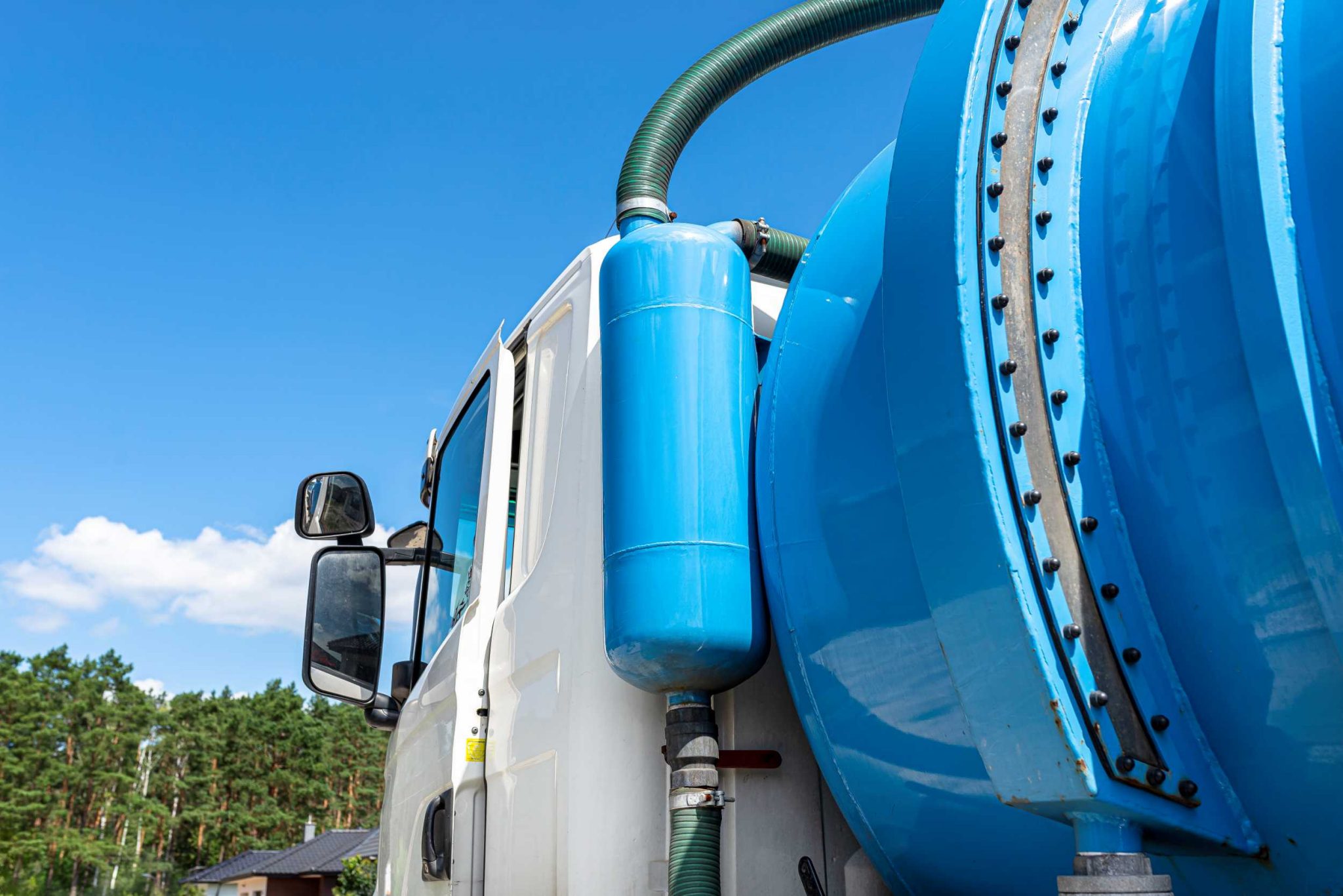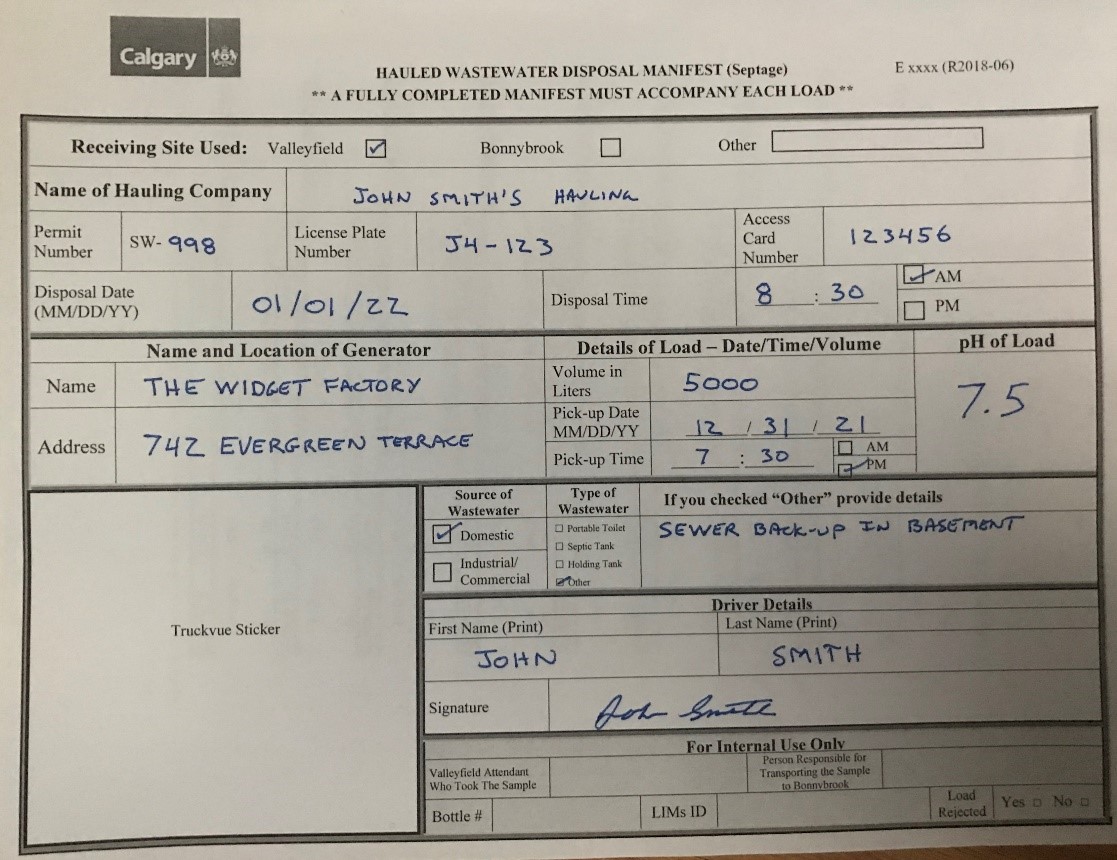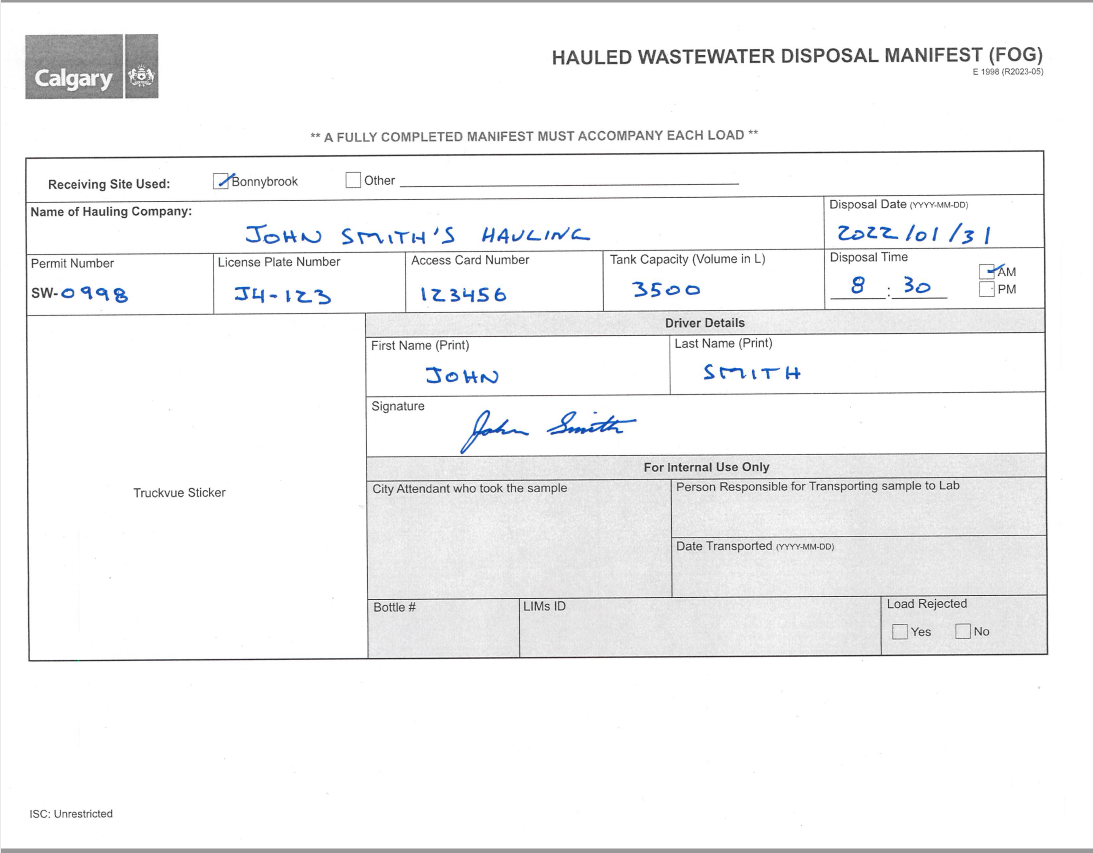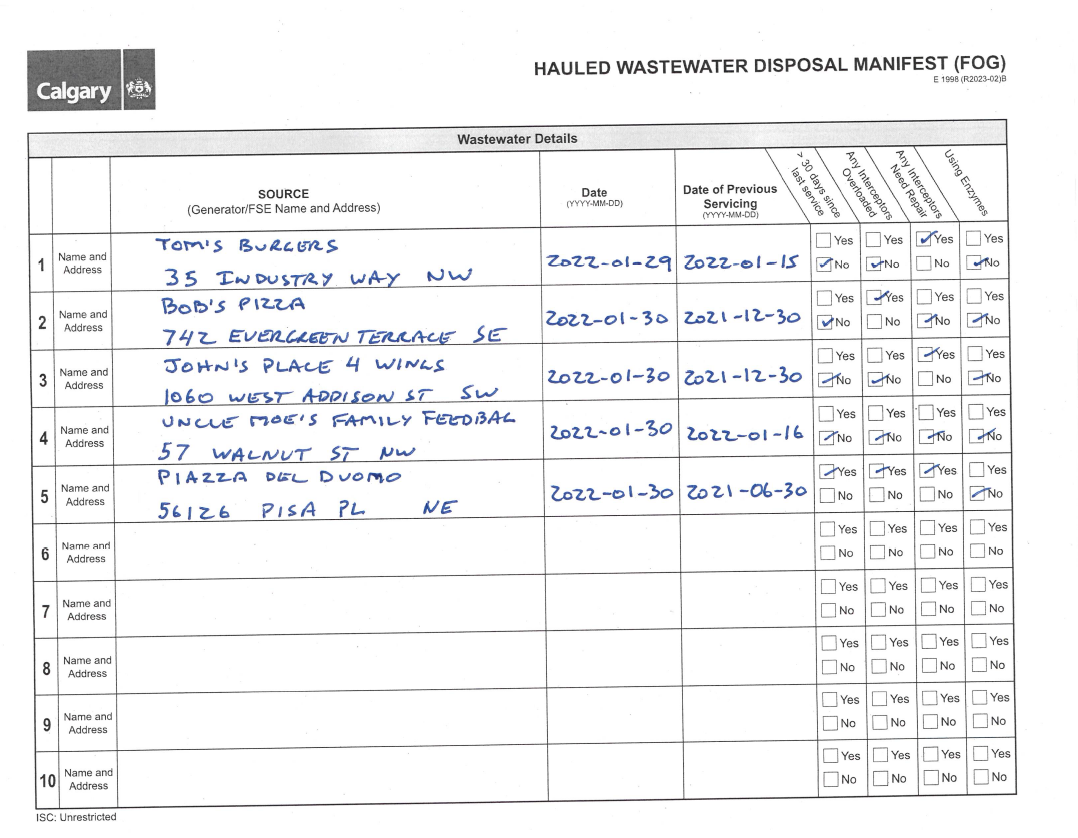Wastewater hauling
When prohibited materials enter our wastewater treatment plant, they can disrupt the treatment process, damaging infrastructure and potentially causing untreated water to be released back into our rivers. Acceptable waste can be taken to an appropriate City of Calgary receiving facility. All other waste must be taken to a third-party facility capable of processing it.
To ensure compliance, all samples will be screened using online instrumentation, and random samples will be sent to the lab for analytical testing. Disposing of non-compliant wastewater at City facilities may result in enforcement action, up to and including suspension of the hauled wastewater permit.
Hauled wastewater manifest
A complete and legible manifest must accompany each load of hauled wastewater. See forms E1998 and E1999.
Apply for a Hauled Wastewater Permit
If you are transporting loads of wastewater, septage or FOG (fats, oils, grease) to a designated City site for disposal to the wastewater system, you will require a Hauled Wastewater Permit. Apply for a Commercial Hauled Wastewater Permit.
Amending an existing Hauled Wastewater Permit
If you wish to amend an existing permit to add a truck, change a license plate number or request a new access card see form E2239.
All hauled wastewater must comply with the wastewater bylaw, specifically the substances listed in Schedule A, B and C. Portable toilet and septic waste are exempt from the BOD and TSS limit.
Waste accepted at City facilities
| Material | Description | Disposal instructions |
|---|---|---|
|
Domestic Wastewater |
Wastewater generated as a result of domestic activities, including cooking, cleaning, washing, urination, and defecation. |
Dispose of at Valleyfield Wastewater Receiving Station Hours of Operation
Emergency or after hours
|
|
Septage |
Wastewater removed from a cesspool, septic tank system, privy vault/pit, chemical toilet, portable toilet, or other wastewater holding structure. |
Dispose of at Valleyfield Wastewater Receiving Station Hours of Operation
Emergency or after hours
|
|
FOG (Fats, Oils, and Grease) |
Animal and/or vegetable fats, oils, and grease, removed from a grease interceptor. Typically from a food service establishment, as a result of food preparation, cooking, and washing. |
Dispose of at Bonnybrook FOG Disposal Station
Hours of operation
|
Resources
The below PDFs were designed to be filled in with Adobe Acrobat Reader. Download the form to your desktop and use Adobe Acrobat Reader to open, complete and submit this form. If you are using Edge or Chrome browser some fields will not work as intended and your form may not submit.
City of Calgary Bylaws:
Permits
Forms
- E1995-Analytical Results Reporting Form
- E1996-Clear Water Waste Disposal Application
- E1998-Hauled Wastewater Disposal Manifest - FOG
- E1999-Hauled Wastewater Disposal Manifest - Septage
- E2005 Food truck log book
- E2225-Non-Compliant Wastewater Investigative Report Template
- E2226-Pool Drain Request Form
- E2227-Pre-Treatment Maintenance Record Sheet
- E2228 – Fats, oils and grease interceptor service record
- Nuisance Water Disposal Flowchart
Fact Sheets
Alberta Environment & Protected Areas
Waste not accepted at City facilities
Any process waste from these types of facilities/activities:
- Slaughterhouses
- Firefighting foam
- Metal plating
- Alcohol and fermentation
- Car wash sumps
- Lift station
- Drilling mud
- Sludge (activated, digested, or otherwise.)
- Laboratory
- Hydrovac (untreated)
- Medical/pathological/pharmaceutical
- Grit removed from ICI premises
What to do if you have an unintentional release
In the event of an unintentional release, it is important to act quickly to prevent the material from entering the wastewater or stormwater system. You should notify:
- 911
- The City of Calgary by contacting 311.
- The owner of the premise where the release occurred.
- Any other person that may be affected by the release.
For any spills that could harm the environment you will also need to report the spill to Alberta Environment & Protected Areas (1-800-222-6514).





